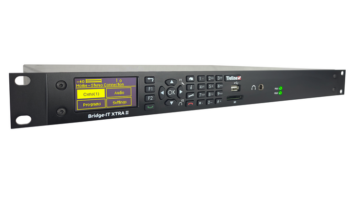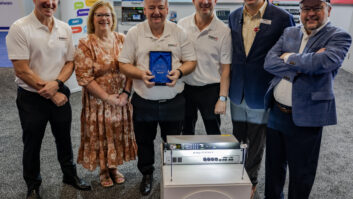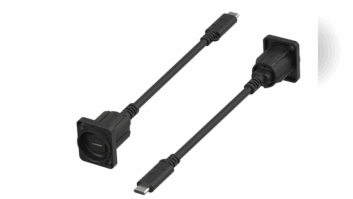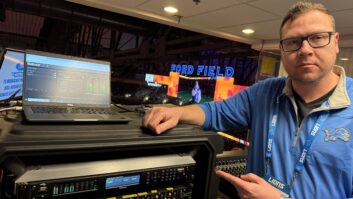INDIANAPOLIS I remember how we used to do remotes: Park the van. Put up the mast. Run the coax into the van. Connect the RPU transmitter. Call the studio. Aim the yagi antenna for best signal at the studio. Set up the monitor system.
This is how it used to be. Some people still do it this way. Heck, we still use our RPU equipment once or twice a year. But usually I find it a lot easier to take the Tieline G3 codec to the site, and choose from a variety of connection options. One of the most appealing of these options is 3G wireless.

A new day
3G wireless has completely changed the dynamic of broadcasting from a remote site.
With RPU, you always had to stay within RF range of the receive site. With 3G, receive sites are everywhere: in your own market, or in another state.
With RPU, the 8-second profanity delay (and/or the HD encoding delay) made setting up an air monitor at the remote site difficult. With the Tieline G3’s 3G connection, it’s as simple as setting up a mix-minus backfeed at the studio.
With RPU, setting up the equipment was beyond the capabilities of many air talent. Wireless 3G isn’t idiot-proof, but it’s possible to train most talent to set it up themselves. It’s not unusual here in Indianapolis for the morning crew to grab the Tieline and head out for some arcane locale with no warning. And it’s a huge convenience to be able to use the backfeed as a studio talkback channel.
Wireless IP isn’t always the answer, of course. When you log onto a shared public network, you are taking your chances that the necessary bandwidth will be available, and will remain for the duration of the broadcast. Depending on the location and the time of day, that is not always a sure bet. Murphy’s Law dictates that the wireless IP connection will work perfectly when you go to check out the site, but not always when air time rolls around. A test from a concert venue works great in the morning, but that evening when it’s packed with hundreds of people on their cell phones, it can be a lot harder to get the required chunk of bandwidth from the cellular provider. This also applies to wired IP connections and, in some cases, POTS connections.
In cases like this, I have learned to always have a backup position. The Tieline G3 has POTS and wired IP capability, in addition to wireless. Sometimes wireless IP is the primary connection, sometimes I use it as the backup. It depends on what facilities are available at a given venue. In rare cases, I have had to fire up the trusty RPU transmitter!
In any case, I would strongly dissuade any engineer who is considering saving a buck by ordering a codec without POTS capability. Being able to use the telephone network for your remotes is a powerful option.
And remember that while wireless IP can deliver near-CD sound quality, even stereo, it has measurable latency. My Tieline is set for a buffer of 250 ms when used in the IP mode. That doesn’t sound like much, but it’s enough to throw off the timing between studio talent and remote talent, or to cause problems when the remote talent is taking phone calls from the studio. (Tieline is now offering new software which automatically optimizes buffer time, and significantly reduces latency, on IP connections. I have not tried it yet.)
When I’m setting up a Tieline broadcast that requires a lot of interaction, I usually look for a POTS line first. The POTS delay is significantly less, and the sound quality is not quite as transparent but still quite good, making this an acceptable tradeoff.
Having the capability to broadcast from anywhere via wireless IP is a powerful tool. In this era of trimmed-back staffs and sales people eager to sell remotes anywhere, 3G provides a welcome measure of flexibility to our remote broadcast arsenal. I can’t imagine living without it.
Mike Rabey is chief engineer with Entercom Indianapolis.
For information, contact Tieline at (888) 211-6989 or visitwww.tieline.com.au.







